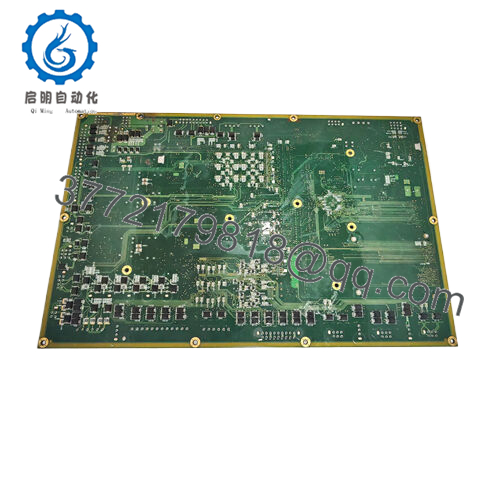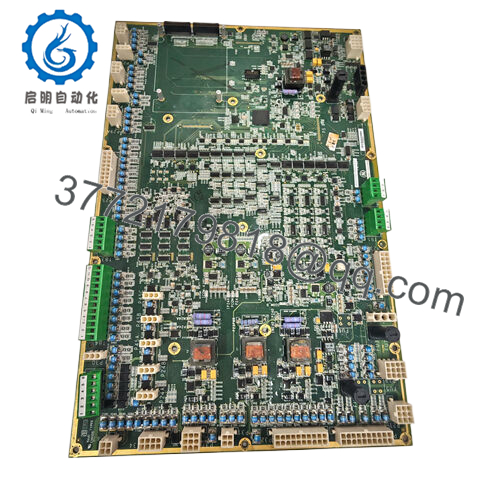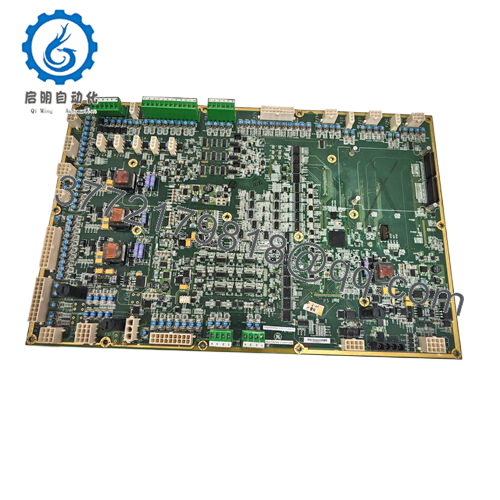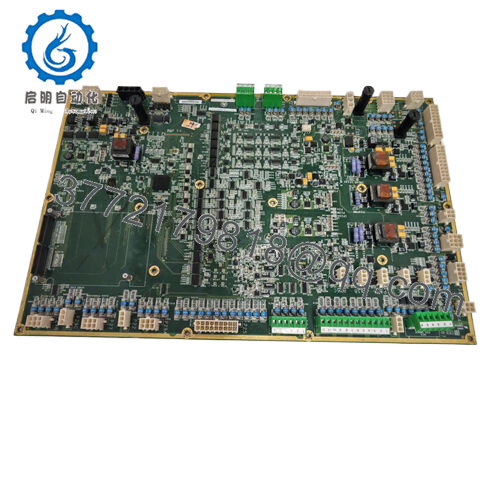Description
In the unforgiving world of turbine control systems, where precise signal interfacing between field sensors, actuators, and the core controller is essential to prevent erratic fuel flow, voltage instability, or undetected faults that could lead to turbine trips or inefficient power output, engineers frequently deal with integration bottlenecks like incompatible terminal configurations, noise susceptibility in high-vibration environments, or the limitations of non-modular boards that demand full system overhauls for expansions. The GE IS200WETAH1AEC steps in as a dedicated terminal assembly and interface board for GE’s Mark VI Speedtronic system, resolving these by providing a robust, multi-connector hub that ensures reliable signal distribution and conditioning for gas/steam turbine management. Picture a combined-cycle power plant where thermocouple inputs for exhaust temps and discrete signals for valve positions must feed the controller without crosstalk—if the interface introduces latency or ground loops, you’d risk combustion anomalies, reduced efficiency, or safety shutdowns that cascade into hours of lost generation and regulatory scrutiny. This board becomes critical in such process control scenarios, where its extensive terminal strips and isolation features uphold high reliability for I/O signals, enabling modular setups that scale turbine protection without disrupting the broader automation architecture.
The GE IS200WETAH1AEC is particularly indispensable in legacy-heavy facilities pushing for incremental upgrades, such as wind farms or hydro plants, where its compatibility with Mark VI’s VME-based chassis allows seamless addition of analog and digital channels without rewiring the entire rack. By incorporating fuses, transformers, and over 45 connectors, it mitigates common threats like overcurrent surges or EMI-induced errors that plague exposed field wiring, supporting goals of enhanced diagnostics through test points and jumper-selectable modes. In dusty, humid, or electromagnetically noisy turbine halls, it prevents signal degradation that could invalidate trends, fostering confidence in real-time adjustments. Keywords like “industrial automation,” “process control,” and “high reliability” come to the fore here—the GE IS200WETAH1AEC bridges the gap between field devices and control logic, minimizing the engineering lift for custom cabling and ensuring uninterrupted performance in environments where every millivolt of accuracy counts toward grid stability and uptime.
- IS200WETAH1AEC
How the Product Works & Fits into a System
The GE IS200WETAH1AEC operates as a core interface board within the Mark VI Speedtronic chassis, typically mounting via standoffs in the VME rack to connect field wiring directly to the controller’s backplane, conditioning signals from sensors like RTDs or thermocouples before routing them to processing modules like the VPRO or VTUR. Positioned at the I/O termination layer of the automation stack, it handles a mix of analog inputs (e.g., 4-20 mA for pressure) and discrete signals via its six terminal strips and over 45 plugs—ranging from 2-pin female connectors for power to 20-pin vertical pins for multi-channel data—while four transformers provide galvanic isolation to block noise paths. This setup interacts with upstream cards like the IS200VCRH1A for relay outputs or downstream exciters, supporting redundancy by mirroring signals across dual channels for fault-tolerant voting in turbine startup sequences.
In terms of functionality, the board incorporates seven fuses for overcurrent protection and jumper switches for gain or range adjustments, allowing on-the-fly tweaks without disassembly, while over 25 test points enable oscilloscope probing for diagnostics without interrupting operations. It draws power from the chassis (typically 28 VDC), with built-in suppression for transients, and its conductive trace connectors (P4/P5) facilitate high-speed data to the core processor for PID loops or fault logging. Communication-wise, it uses the VME bus for integration with protocols like Modbus or Ethernet via optional gateways, enabling SCADA overlays for remote trending. For example, in a gas turbine setup, the GE IS200WETAH1AEC might terminate exhaust gas temp probes, filtering signals locally before passing them to the controller for combustion control—all while maintaining synchronization with speed probes for overspeed protection. Rather than a passive passthrough, this board actively conditions and routes, fitting neatly into modular VME architectures where expandability is key, and reducing complexity in wiring harnesses for faster commissioning in the overall process control loop.
| Specification | Details |
|---|---|
| Model Number | IS200WETAH1AEC |
| Brand | GE (GE Vernova) |
| Type | Terminal Assembly/Interface Board |
| Input Voltage | 28 VDC (via Mark VI chassis) |
| Operating Temp Range | -40 to +70°C |
| Mounting Style | VME rack-mounted (standoffs) |
| Dimensions | 13.3″ x 10.7″ (approx. 338mm x 272mm) |
| Weight | 2.5 kg |
| Interface/Bus | 6 terminal strips, 45+ connectors (2-20 pins), VME backplane |
| Compliance | UL, CE, IEC 60068 (vibration/shock) |
| Supported Protocols | Modbus, Ethernet (via system) |
| Typical Power Draw | 15 W |
Real-World Benefits
Deploying the GE IS200WETAH1AEC brings a level of signal assurance engineered for turbine rigors, where its transformer isolation and fused protection ensure long-term performance by containing transients that might otherwise corrupt analog reads, letting exhaust temps hold steady at ±0.5°C even under 50 Hz harmonics from generators. In practice, this means valves modulating fuel flow with sub-second fidelity, averting lean-burn inefficiencies that waste fuel or spike NOx—ultimately lowering operational costs in plants where precision directly impacts megawatt output and emissions caps.
Beyond robustness, the board reduces engineering overhead through its plug-and-play VME fit, allowing teams to add channels via simple terminal strips without custom harnesses, which streamlines retrofits in brownfield sites and frees focus for algorithm refinements over troubleshooting. Its diagnostic test points enable quick fault isolation, supporting predictive strategies that spot connector wear early, which cuts mean-time-to-repair to minutes and aligns with lean maintenance for extending asset life. For operators chasing reliability in high-stakes power gen, the GE IS200WETAH1AEC turns potential wiring vulnerabilities into a fortified interface, fostering consistent control and compliance without mandatory chassis swaps.
The GE IS200WETAH1AEC also shines in maintenance efficiency, as its jumper-configurable modes adapt to sensor variances on-site, minimizing recalibrations during outages and enabling hot diagnostics via backplane access. By buffering signals locally, it prevents controller overloads during transients, enhancing overall system availability to 99.999% levels typical of Mark VI deployments, where even brief glitches could trigger turbine cooldowns. Teams gain from this resilience in tangible ways: fewer spare inventories for field repairs, faster root-cause analysis through integrated LEDs, and the assurance to scale I/O without proportional risks. Ultimately, the GE IS200WETAH1AEC transforms interfacing from a chore to a capability, supporting leaner operations where turbine health and grid demands coexist seamlessly.
Typical Use Cases
In gas turbine power plants, the GE IS200WETAH1AEC terminates thermocouple arrays for combustion monitoring, its multi-pin connectors handling high-temp signals under 70°C enclosures and vibrations from 3600 rpm rotors—high reliability ensures process control by alerting on 200°C deviations, preventing hot spots that could warp blades and halt critical system uptime during peak loads.
Hydroelectric facilities deploy the GE IS200WETAH1AEC for wicket gate actuators, interfacing discrete commands amid watery mists and seismic stresses; its fused protection upholds process control integrity, sequencing flows without short-induced trips in variable-head environments demanding fast data cycles.
Wind energy converters use the GE IS200WETAH1AEC in nacelle controls, routing anemometer and pitch sensor inputs over extended harnesses in gusty, saline exposures—its isolation delivers high reliability, optimizing blade angles for max yield without grid destabilization in remote, high-consequence process control setups.
Compatible or Alternative Products
IS200VETAH1A – Simplified terminal board variant for lighter I/O loads in Mark VI chassis.
IS200WETAH1A – Base predecessor without EC revision, suited for legacy Mark VI retrofits.
IS200VCRH1A – Relay output module companion for alarm extensions from WETAH1AEC.
IS200VPROH1A – Proportional output card for analog actuator pairing in turbine loops.
IS200VTURH1A – Turbine protection module add-on for overspeed integration.
IS200EPCTH1A – Exciter power control terminal for wind-specific expansions.
IS215WETAH_G01 – Mark VIe upgrade version with Ethernet for modern hybrids.
VPRO-I/O – Vibration protection interface for complementary monitoring in racks.
Setup Notes & Maintenance Insights
When preparing to integrate the GE IS200WETAH1AEC into your Mark VI chassis, start by confirming VME slot compatibility—typically positions 3-6—and verify firmware on the core controller (e.g., VPRO) matches revision EC via ToolboxST to avoid handshake issues. Allocate space for the board’s 13.3″ x 10.7″ footprint, ensuring at least 2 inches of airflow around transformers to manage heat dissipation in enclosures up to 70°C, and inspect incoming cabling for 28 VDC polarity with a multimeter showing <200 mV ripple to prevent fuse blows. Ground the chassis solidly to <0.5 ohms per NEC, especially in EMI-prone turbine halls, and perform a continuity test on all 45+ connectors pre-power-up to catch opens exceeding 1 ohm.
For ongoing maintenance of the GE IS200WETAH1AEC, prioritize quarterly visual checks of the seven fuses for discoloration—replace any at 5 A rating with exact matches if resistance drifts >0.1 ohm, particularly in humid sites where corrosion accelerates. Monitor terminal strips every six months for tightness using a torque wrench at 0.8 Nm, and log jumper positions against as-built drawings to flag unauthorized tweaks; in dusty environments, blow out test points annually with compressed air to maintain probe access. During yearly turbine outages, run diagnostic scans via the Mark VI HMI to validate signal integrity across channels, simulating a 4-20 mA loop with a calibrator to confirm linearity within 0.5%—but keep it non-intrusive: no full de-racking needed. This methodical approach, rooted in GE’s maintenance protocols, keeps the board vigilant without excessive interventions, syncing checks to operational cycles for minimal disruption.





 WhatsApp: +86 16626708626
WhatsApp: +86 16626708626 Email:
Email:  Phone: +86 16626708626
Phone: +86 16626708626


